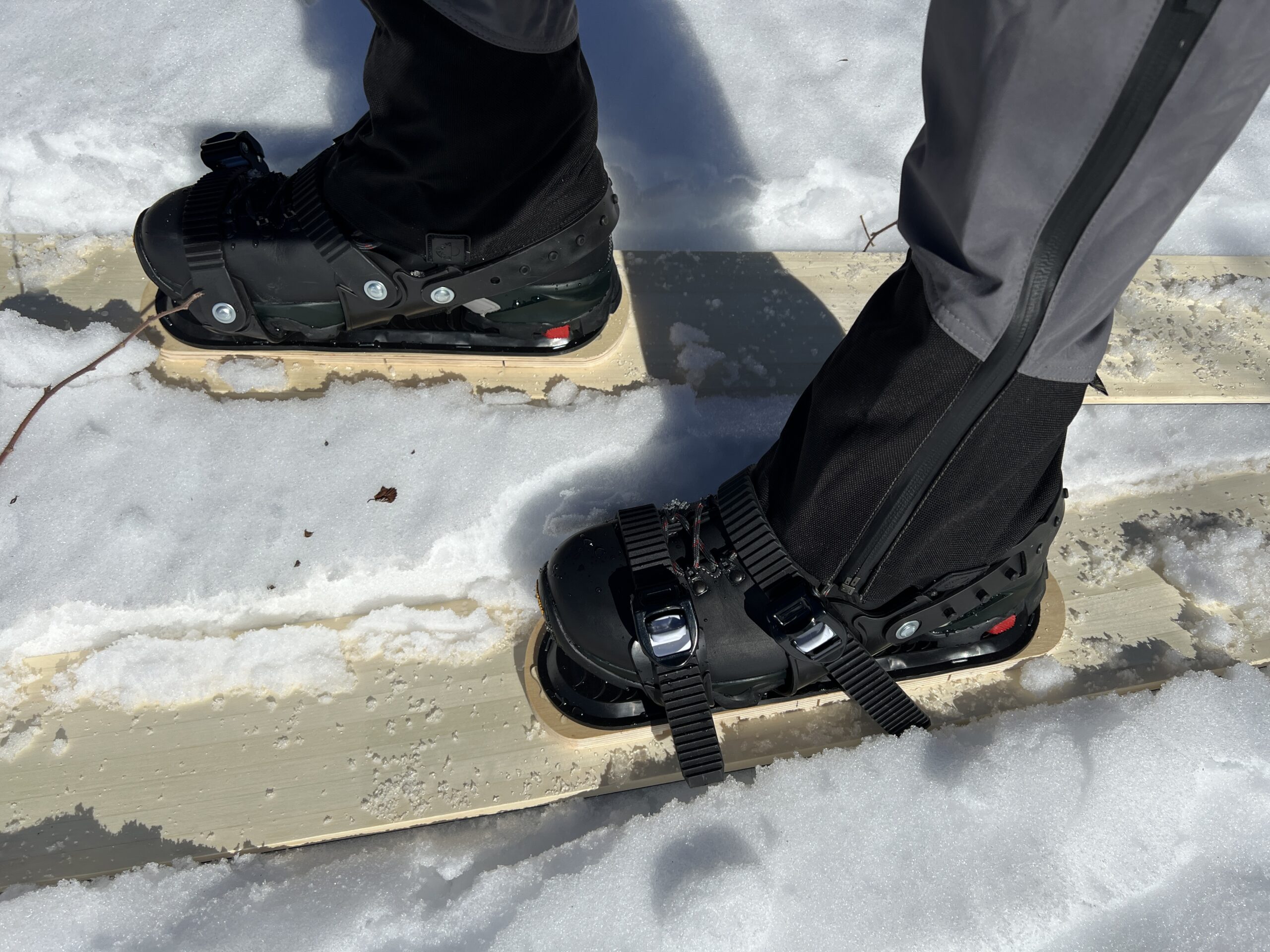We offer a variety of ski bindings, each tailored to provide different levels of ski control and ease of boot attachment. The key advantage of our bindings is that they don’t require special ski boots, which often cost a lot and still leave your feet cold.
Leather bindings are the most basic and traditional type of ski binding, refined over decades. They offer several advantages: affordability, ease of repair if needed, and long-lasting reliability. The binding consists of two straps—one that wraps around the toe of the boot, and another that loops around the back of the shoe. The rear strap’s primary function is to secure the ski to your foot when moving the skis backward. This feature is particularly useful when navigating where changing direction may require you to move the skis in reverse. Beyond this, the rear strap has limited applications.
One drawback of these bindings is the buckle design. To adjust the tension or secure the strap, you often need to remove your gloves, and fine-tuning the tightness isn’t easy due to the buckle’s small parts.
The binding kit also includes a plastic pad, which is optional. This pad is designed to enhance the grip between the boot sole and the ski. If you prefer a more straightforward binding setup, you can choose to omit the plastic pad without affecting the overall function.
Attention: at your request, these bindings can be pre-assembled on your skis purchased in the same order. To request this service, please add a note to your order on the Checkout page (below ‘Payment options’). If you choose pre-assembly, we will install the wooden plate and plastic pad for you. All that will be left for you to do is attach the leather straps.
Now let’s look at ski bindings that feature a plastic platform and a strap securing the toe of the boot. Installing these bindings is simpler than with leather bindings—just screw in eight screws. A plastic pad fits inside the platform to enhance grip. The strap loop can be adjusted to fit different toe sizes.
These bindings offer several advantages: they’re relatively affordable and easy to use. You don’t need to bend over to put them on or take them off, which is especially convenient if you’re frequently taking your skis on and off, wearing bulky ski clothing, or carrying a backpack.
However, one drawback is that these bindings make it difficult to move the skis backward. When you pull your foot back, the ski tends to slip off. Additionally, adjusting the strap loop in cold weather can be challenging, as plastic loses flexibility in low temperatures.
Rigid plastic bindings with two straps
This type of binding has several key differences from the ones previously described. First, the toe of the boot is secured with an adjustable strap, allowing you to tighten it according to the size of the boot. This tension can be easily adjusted each time you put on the bindings. Second, the strap around the back of the boot is more rigidly attached to the binding, adding extra stiffness to the entire setup. This rigidity improves maneuverability, making it easier to control the skis.
The binding’s design does not require a wooden platform. And the plastic pad is already integrated into the binding, so no additional attachment is required. However, the drawbacks include a higher cost compared to simpler bindings and a more complex overall design.
Rigid plastic bindings with three straps
These bindings require more effort to install but offer greater control over the skis. As shown in the images, the design features one strap around the back of the boot and two in the front—one securing the toe and the other supporting the front instep. This setup provides maximum control over the skis. The back strap only needs to be adjusted once to fit the boot. Two other straps, equipped with variable-tension buckles, must be fastened and unfastened each time you put on or take off the skis.
The main drawback of this binding is its complexity. Installation involves attaching a wooden platform, and you have the option to include a plastic pad. The pad adds a bit of friction between the boot and the platform, enhancing grip. The straps are then secured to the ski with four screws.
Attention: at your request, these bindings can be pre-assembled on your skis purchased in the same order. To request this service, please add a note to your order on the Checkout page (below ‘Payment options’). If you choose pre-assembly, we will install the wooden plate and plastic pad for you. All that will be left for you to do is attach the straps.









